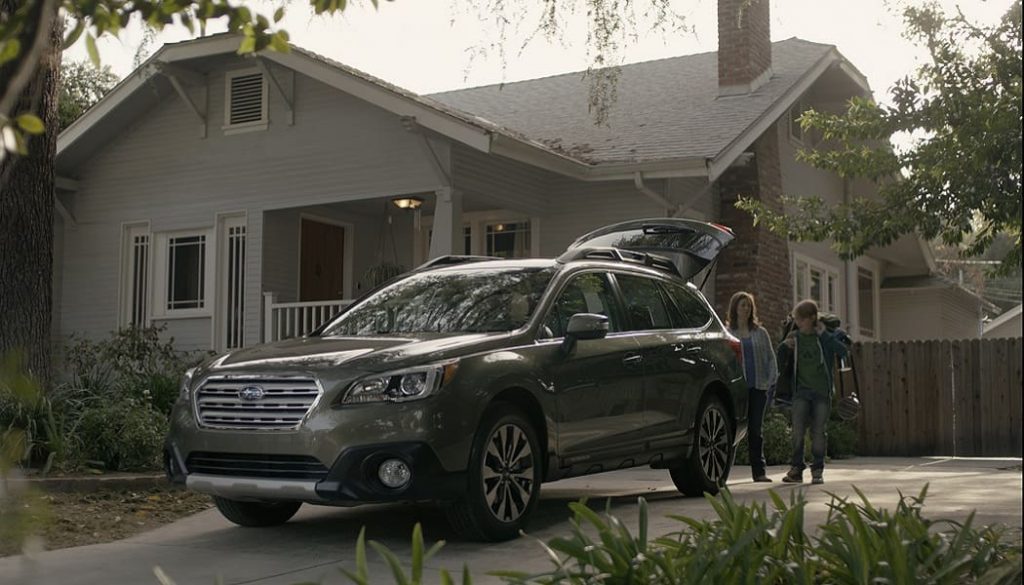

Most people who know the automotive market are aware that Subaru is a little different. To say the Japanese brand marches to the beat of its own drummer is an understatement.
The strength of the Subaru brand is based on this wild individualism. It can be polarizing for some people. By being itself without any apologies, Subaru has been able to win the respect of many consumers. The company also sets itself apart in a crowded market. There’s really no confusing Subarus for Hyundais or Chevrolets.
Continuing to stay distinct in the market has been absolutely vital to Subaru’s survival.
Just look at what happened to Saab. Not too long ago, Saab was just as quirky and different. When you saw a Saab, there was no mistaking it for any other vehicle. They were born from jets. The names and designs were lifted straight from airplanes. Nothing else on the road came even close.
After being bought by GM, the Swedish automaker started to become far too normal. It started with the 9-3 looking like every other compact sedan on the market. The 9-5 followed suit. Core fans became rightfully disillusioned.
Then Saab slipped into oblivion. People would’ve cared more, and Saab would’ve had more of a chance making a comeback and sticking around had it preserved that uniqueness. Instead, it transitioned into just another car brand. It was easily forgotten in a crowded market.
It’s a great time to be Subaru. Month after month, the company posts big sales in the United States. For 2016, Subaru of America posted 615,132 car sales, a 6 percent increase from 2015. This is happening at a time when many brands are seeing sales stagnation or even contraction.
To understand what makes Subaru so different, you have to look beyond the vehicle designs. Sure, those are a factor. But the brand appeal is more than skin deep.
Back in the early 1990s, Subaru wasn’t doing so well. In a bold move, the brand started marketing to a group which was already gravitating to it: lesbians. By targeting a niche other automakers didn’t dare to address openly, Subaru gained a loyal following.
Related Search Topics (Ads)
Instead of being overt in its appeal to homosexual shoppers, Subaru found clever ways of getting the message out. Over time, this approach evolved into a quirkiness plenty of people, including many heterosexuals, find charming.
Watch some Subaru commercials on YouTube and you’ll see they’re about having clean fun in the great outdoors, cherishing the precious moments with loved ones and appreciating the magic of dog ownership. Some highlight the common practice of plastering the back end with stickers that make social statements.
You just don’t see any of that in a Chevy ad, ever. Other automakers would be scared to potentially offend customers. Subaru does what it does without batting an eyelash.
It doesn’t hurt that Subaru was ahead of the curve when it came to vehicle design. Again, in the 1990s automakers were all about the supposedly excellent handling front-wheel drive provides. Subaru, on the other hand, was putting all-wheel drive on more cars, so owners could drive through snow, fairly rugged dirt roads and even cross small bodies of water.
The automaker understood that there were people who wanted to be out in nature, and that meant being able to tackle some difficult situations. At the same time, those people didn’t want to wrangle an unruly, large and gas-guzzling SUV like the Explorer or Pathfinder. Subarus were like the ultimate weekend warrior vehicle you could drive without any trouble in San Francisco or any other big city. Try piloting a Chevy Blazer down Lombard Street and see how that goes.
Funny enough, the Subaru was making crossovers before they were cool. Toyota tries to claim it started the crossover movement with the RAV4, but Subaru is the true champion of the crossover. Even today, the brand offers crossovers that are appealing, because they handle better than options from other companies. Just the use of boxer engines for a lower center of gravity shows the company is dedicated to delivering better driving dynamics. In other words, even though crossovers aren’t generally known for being fun to drive, Subarus are. They’re utilitarian drivers’ cars.
Japanese automakers have been consolidating like crazy lately. Nissan and Toyota have been buying competitors, forming coalitions and getting ready for a big showdown with each other. This puts Subaru in a precarious position. If it doesn’t keep growing and stay robust, it could easily be overpowered by the giants.
Rather than sacrifice its unique flair for sales, Subaru has struck an interesting compromise. Vehicle exteriors have become more curvaceous and mainstream, while maintaining a unique flavor. You can identify a Crosstrek or Outback as a Subaru right away. Details some didn’t find appealing like huge circular foglights or grey plastic body cladding are gone. One of the most dramatic transformations involves the WRX line.
The company still runs quirky ads. Spend a little time in at a dealership and you’ll recognize right away the culture is still intact. For shoppers who are disillusioned with traditional automakers, that fact alone can make Subaru attractive.
Only time will tell how the Subaru culture continues to evolve. All-wheel drive will likely continue to be a staple. Appealing to outdoor enthusiasts and dog owners will as well. Beyond that, who knows?
Related Search Topics (Ads)